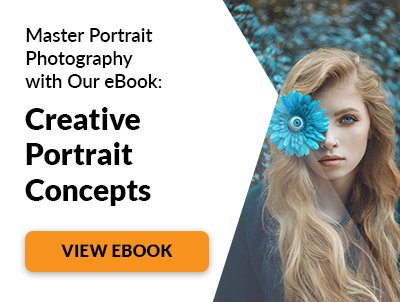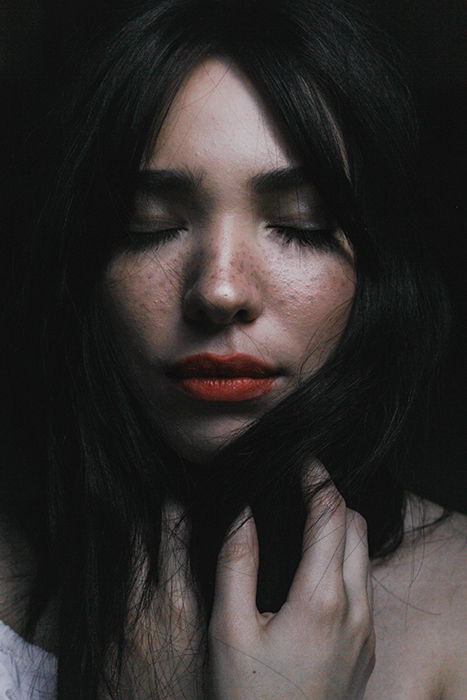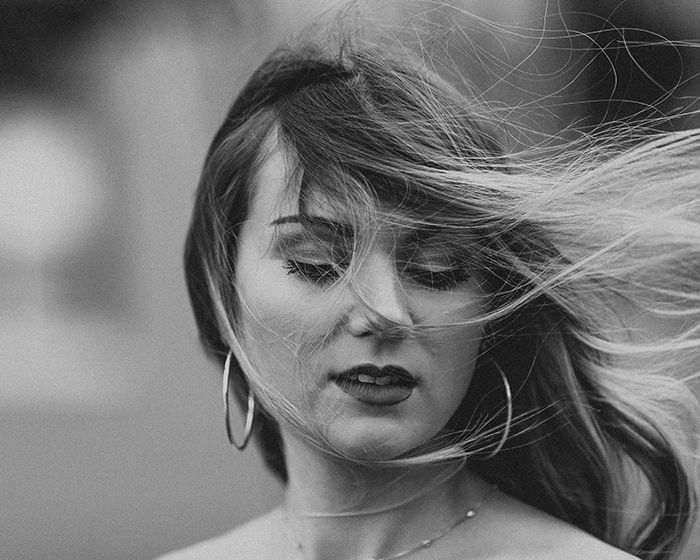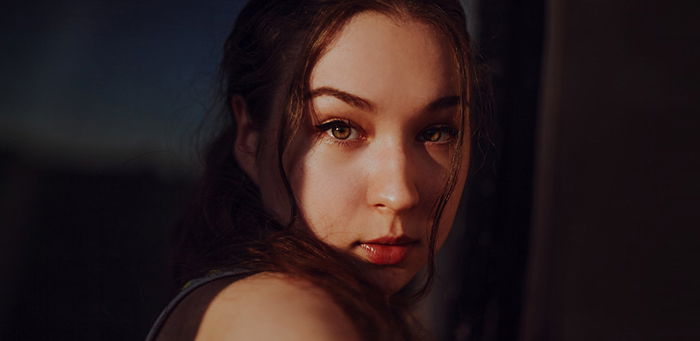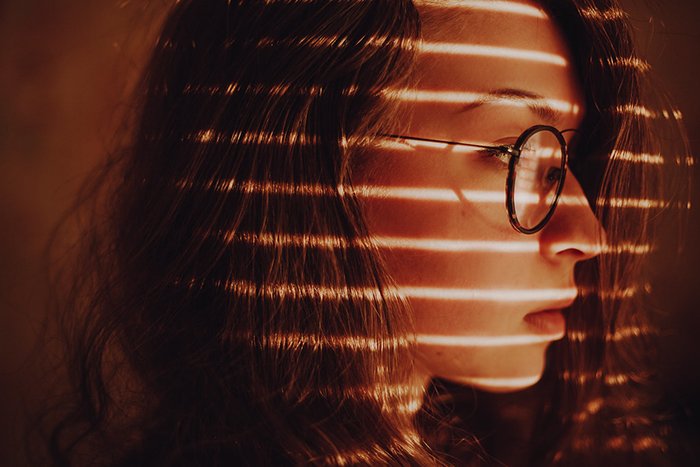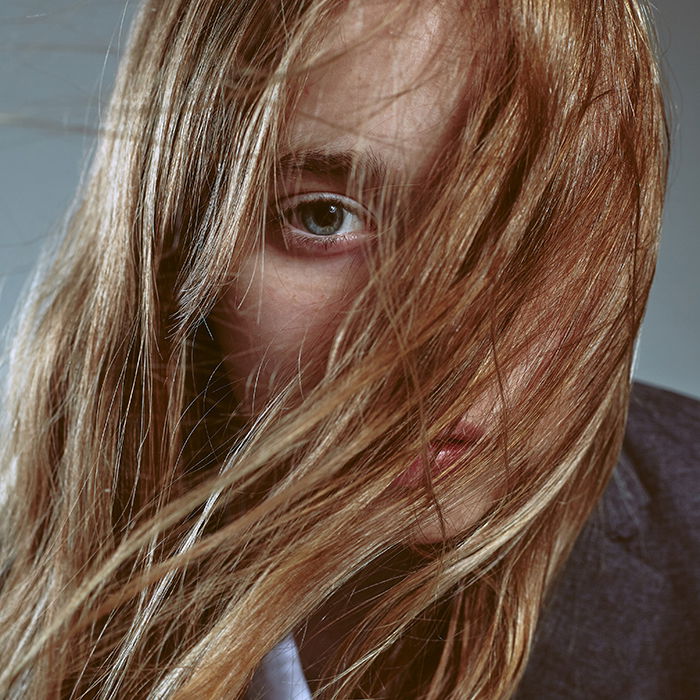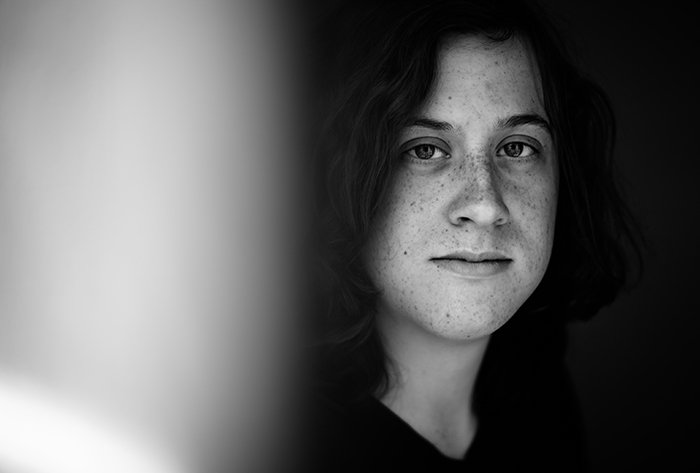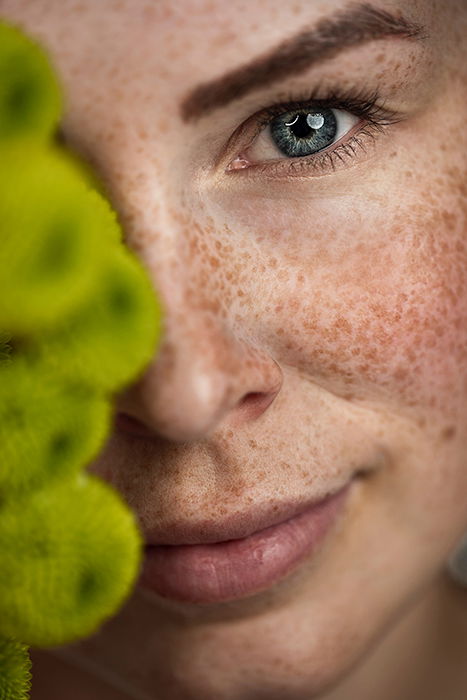9 Tips for Close Up Portrait Photography
We’ll give you some ideas of how you can improve your close-up portrait photography. And we have some excellent portrait examples to inspire and ignite your imagination.
1. Make the Face Stand Out With Makeup or Face Paint
In close-up photography, it’s easy to notice flaws, textures, and other details. These don’t stand out as much in traditional portrait photography. Before your photoshoot, make sure that your model is happy with the way they look. The more confident they are, the better your close-ups will look. You can boost their confidence using makeup, creative face paint, or fake textures. For example, you can use black eyeliner and yellow eyeshadow to make blue eyes pop. You can add a little blush to pale cheeks to make your subject look younger. Avoid using too much foundation, mascara, and concealer. These will make your subject’s face look cakey and unnatural. This will result in unflattering close-ups. You can also enhance your model’s face using makeup techniques. You can try fake freckles (drawn with an eyebrow pencil) or puffy eyes.
2. Make Your Portraits Pop with Stunning Accessories
You can use accessories. props or jewelry to enhance your portraits. Some might say they are distracting and unnecessary. But when done well, accessories can make a portrait stand out from the crowd. Portrait photography is about personality. You’re exploring a person through photography. And you can use props and accessories to enhance certain aspects of someone’s personality. Or, if you’re working with fairy tale or storytelling photography, accessories can help build characters. When choosing accessories, think about what you’re trying to say. Think about your subject and how you want to portray them. You also need to think about colors. Use accessories that complement the coloring of your subject. You can match colors from the opposite side of the color wheel. For example, if your subject has blue eyes, add yellow flowers.
3. Take Face Close-Ups Using a Zoom Lens
The wrong equipment will make your close-ups look distorted and unflattering. If you take a close-up portrait using a wide-angle lens, it might affect your subject’s proportions. Their nose or chin might end up looking bigger than the rest of their face. This is the perfect effect for funny photography, but not for conventional portrait photographers. Use a zoom lens for portraits for the best results. This allows you to take photos from a distance, giving your subject space to move around without feeling claustrophobic.
4. Use a Large Aperture for a Softer Focus
Close-up portrait photography doesn’t come with a set of rules. You can use any photography techniques you like. But it’s important to note a few things about aperture to make the most of your photoshoot. If you use a large aperture, such as f/1.4, your camera can focus on only so much. If you like the soft-focus effect, make sure you use manual focus. That way, you can capture the right details, such as the model’s eyes. For those who want a very sharp close-up portrait, a small aperture (such as f/8) is the answer.
5. Use Natural Side Light for Softer Shades
Like textures and details, lighting stands out more in close-up photography. If you shoot from the right angles, you’ll be able to shape your model’s face. You can create a sense of mystery and add depth to your portraits. There are different types of natural light you can work with. One of the most effective ones for this genre is sidelight. All you need is a window (or an open door) and soft light. Cloudy and sunny days are perfect for this. Your model should sit next to the light source without facing it completely. The light should hit half of their face and then naturally fade out on the other. This will create a beautiful transition. It’ll make your portraits look like more than a flat picture.
6. Use Direct Light to Create Lighting Patterns
Direct light and patterns work very well together. But sometimes, you might find that your close-ups look dull. You can make them more interesting using custom shadows of your own making. For this idea, get as creative as you like. All you need is bright sunlight and something to cover your model’s face with. The object should have some kind of pattern. That way, you can experiment with different shadows. You can use curtains, hats, window blinds, hair, and so on. The more unusual the patterns, the easier it will be to take unique close-up portraits.
7. Add Diversity with Different Facial Expressions
The right facial expressions can make your close-ups look joyful, mysterious, or thought-provoking. A subtle eyebrow movement can turn a curious expression into a suspicious one. A shy smile can make a dull portrait look exciting. To master the art of facial expressions, use references. You can use film stills, stock photos of facial expressions, or your own imagination. You can’t expect your model to try out different expressions. Especially not at the beginning of your photoshoot. To make everyone feel comfortable, start with normal expressions. Try introducing various references once they’re used to being in front of your camera. Approach this casually and prioritize silliness. Your model won’t feel pressured or awkward. As a result, your close-up photography will have personality.
8. Use Foregrounds to Create Interesting Textures
Foregrounds are great for enhancing compositions. They can add a necessary pop of color to dull close-up portraits. They’re also one of the easiest ways to make close-ups look more striking. All you need is an object to use as a foreground and a large aperture. The larger the aperture, the blurrier the foreground will look. You can shoot through semi-transparent objects, such as glass. These create reflections around your model. This will give your close-ups a clean, minimalistic look. You can also hold an object in front of your lens, ensuring that only part of your lens is covered. This will create a blurred foreground. You can use it to hide parts of your model’s face, make your composition more colorful, or add depth to your close-up. You can use any object you like, but keep in mind that some things make better foregrounds than others. Start by using string lights, hands, flowers, branches, and fences.
9. Experiment With Creative Cropping Techniques
Cropping doesn’t mean you have to crop your final results during the editing process. You can crop things out during your photoshoot. To do this, change the way you approach photography. Instead of photographing your model directly, you can photograph half of their face. Or photograph the top of their head, the bottom half of their face, etc. Combined with good lighting, these cropping techniques will let you get creative. And you won’t compromise the quality of your work.
Conclusion
Close-up portrait photography can be so much more than detailed photos of people’s faces. To elevate your close-up photography, focus on lighting, storytelling, foregrounds, and expressions. You’ll take authentic and eye-catching photos of any subject with these elements. Check out our Profit from Portraits ebook to take your portraiture to the next level!


